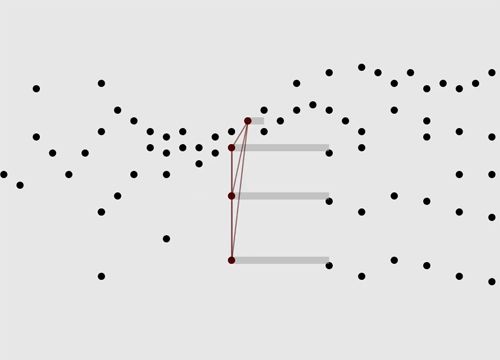
Check out samizdat drafting company’s Fuguestate, a project that’s a brilliant introduction to the math behind music theory through a simple visualization of Bach’s “Little Fugue” on a player piano type roll. This project takes a complex amount of data and makes it simple and beautiful – and by the time you’ve finished watching the animation, you’ll have a much better idea of how for Bach, math is music. Image: channingrodman.com
Students in one of my classes are currently creating works of art inspired by one of three themes- power, change and/or pressure. This unit of study, originally called “Paintings About Power”, was expanded this year to include two other themes of particular interest to my students.
While the initial sketches for this assignment have been good- students are investigating how to depict things like the power of money, change in the environment, pressures imposed by the media and the power of adults over children- many students have bits and pieces of good quality ideas that aren’t quite there yet.
Years ago I had a professor who was a bit cruel when it came to giving feedback. But one piece of feedback he gave me has influenced my teaching, especially in units like this one. He once said, exasperated over my inability to get to the next step on a piece, “Joe, you call these ideas?? Put them together and make one good one!”
In the spirit of this advice which has resonated with me for years I have asked my own students to begin combining ideas in order to more fully explore the theme and subject they have chosen. For example, one of my students, Dennis, had a sketch of an imposing figure wagging her finger as if to scold an invisible child. Another one of his sketches featured a tiny child in a large classroom being swallowed up by the space. After talking for a bit we decided to combine and complicate the ideas in order to illustrate the power of adults (teachers?) over children. Dennis took the imposing figure, got rid of the finger wagging, and placed it behind the tiny child while simultaneously filling the doorway of a classroom, almost blocking the small child from entering, or exiting.
If students are going to spend days or even weeks on a work of art, I want them to have good quality ideas that will get paired with techniques and strategies learned. Bringing separate ideas together to form a unique vision can be one way to go deeper with our students.



